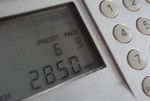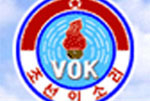North Korea’s state-run television and radio service has begun broadcasting via a South Korean satellite, according to reports from satellite monitors in the region.
Korea Central Television (조선중앙텔레비죤) appeared on the Koreasat-5A satellite in mid March alongside two radio stations: the Korean Central Broadcasting Station (조선중앙방송) and Voice of Korea (조선의소리).
The transmission appears to mirror KCTV’s long-standing broadcast on the Thaicom-5 satellite but there are a couple of important differences.
Because the Koreasat broadcast is in ku-band, it requires a much smaller dish that the C-band transmission on Thaicom. The latter needs an antenna of 2-3 meters across while the Koreasat signal needs a dish of about 60-100 centimeters — similar to those used for direct-to-home satellite television.
And unlike KCTV’s existing satellite signals the Koreasat broadcast is encrypted, which means a valid decryption key is required to view it. The BISS encryption system being used is popular with TV broadcasters for internal feeds and rarely used to deliver signals to the public.
For this reason, I suspect the transmission isn’t one from Pyongyang intended to expand KCTV’s reach but rather a feed set up by a South Korean broadcaster. Redistribution of the Rodong Sinmun recently switched from Yonhap News to News 1 and it’s possible a company has acquired redistribution rights for KCTV’s signal too.
Koreasat is operated by KT Sat, a unit of Korea Telecom, and any transmissions would have to be approved by the company and the South Korean government so for that reason also, it would not be a natural choice if KCTV wanted to get more viewers.
The Korean Central Television signal can be found at 12.377GHz, horizontal polarization, symbol rate 4166, in BISS-encrypted DVB-S2.





